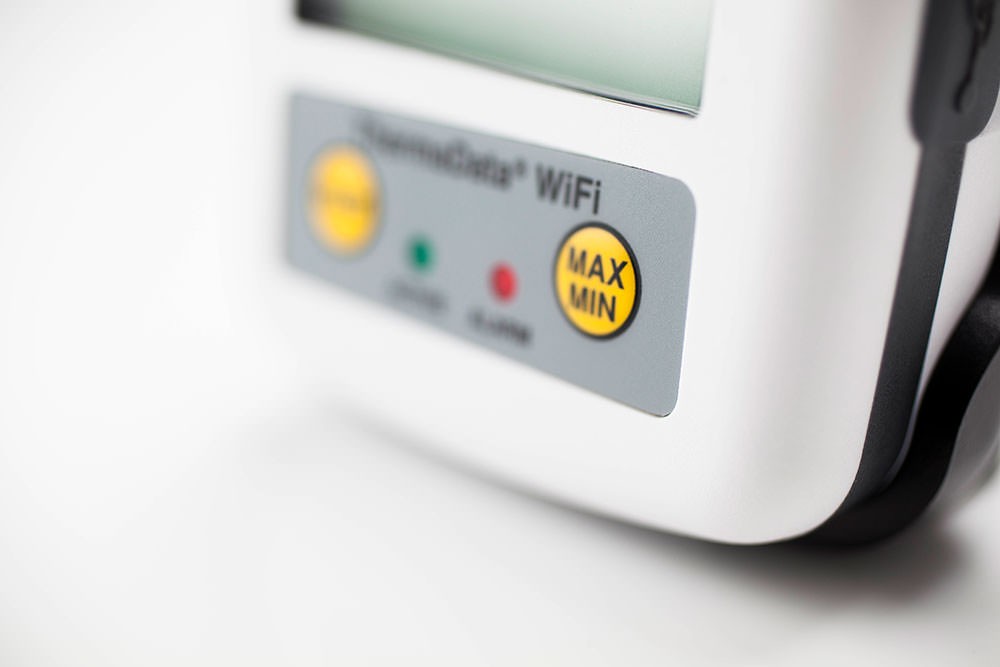ThermaData Studio – Auto Archive Feature

Following on from our ThermaData Studio Walk Through Setup Guide today we are discussing the fantastic auto-archiving feature in the ThermaData Studio Software. It is a very handy feature in which you can set the software to automatically download and archive data which has been transmitted by the unit and captured by ThermaData Studio. Auto Archiving is a fantastic time saving feature which is perfect for HACCP compliance and audit checks. You’ll never forget to download your data – it does it for you!
To set up Auto Archive simply locate the button in the top bar on the Home tab. You can see here that the third row down within the new window says ‘Instruments’, from here you can choose which logger unit you want to add and enable Auto Archiving on.

We can then set the intervals at which we want the unit to record the temperature; however you cannot set the interval for which the unit transmits the stored data to the Studio software. Auto Archive will automatically transmit the data and archive it accordingly every 4 hours, this is to maximise the battery life of each ThermaData WiFi instrument.
Although the recommended transmission rate may seem too long period for some people, if at any stage the recording interval registers a temperature outside of the present high or low alarm limits, the instrument will automatically send a new transmission containing all the latest data, allowing you to be notified as soon as possible. If you would like the data to be transmitted more frequently then you must turn off Auto Archive and change the settings accordingly in the Instrument Settings, this however will mean you have to manually save and archive your data.
Within Auto Archive you now also have the ability to create groups. NEW for 2019 this addition to Auto-Archive allows you to group multiple loggers together when the data is archived. For example; Fridge & Freezer loggers may be one group and within that group it will archive the data by Year and then Month. To create a group select the Group tab while in the Auto-Archive window and enter the name of the groups you are creating one at a time.

Once a group has been created simply drop down to the ‘Instruments’ tab and click on which ones you would like to add like so:

The final page on the auto archiving section is arguably the most important:

Firstly, you choose the location (file path or “directory”) for all auto archived data to be saved. This can be anywhere on a local PC or on a shared drive. To change this directory, simply click on […] icon.
Then, you have a choice of customisable ways to sort all your data. There are 3 options, and each will create a folder within each other for you to easily managed all your auto archived data.
Below is a great example of one easy way to sort, but it is entirely up to the user.

The last box out of the 3 is always what the data file is saved as. So, in this instance, each saved file will contain a month’s worth of data. If the last selection was “week”, the saved file would only contain a week’s worth of data, and so on…
Also, if you do not choose to sort by instruments at any stage, multiple instruments will be saved within the same file. This may be useful if you have grouped your loggers together.
If you click on preview, it will provide an example of how the chosen options are laid out.

For every file that is saved in auto archive, you will also get a pdf report automatically saved. This show any alarms that have been triggered during the time period of that file. Each time each logger transmits data to ThermaData Studio, these files will be updated, so they may not populate as soon as you finish set up, or when you first turn on ThermaData Studio.
Handy Tip: If you accidentally close ThermaData Studio, or your PC performs an automatic update overnight, when you next turn on ThermaData Studio, and each logger successfully transmits data, auto archive will collect any unsaved data that is within each of the loggers internal memory, and update all your saved files.
